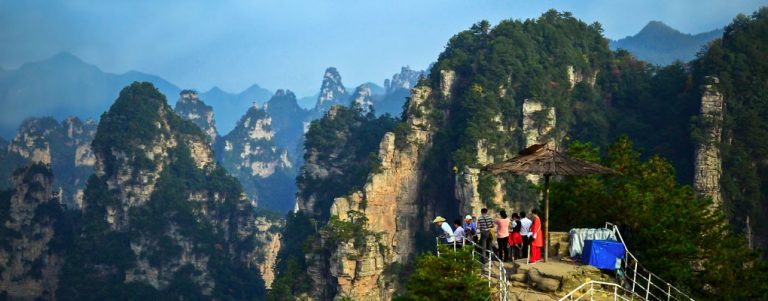
Xian and China attractions and local tours
Why visit Xian and China and regional tours? If it is your first time to visit Xian, then you may wonder what are the most important things to do in Xian for a short trip of 2-3 days. There is huge information on what to see in Xian, which you may get from either some popular travel books or plentiful quality websites including tripadvisor.com and about.com. As a local travel expert, we are happy to present you our version of Top 10 Things to Do in Xian for your reference. You are kindly advised to visit Xian per your personal interest. Hope our Top 10 Things to Do in Xi’an will be helpful in planning your Xian trip.
Lan Kwai Fong – or LKF for short– is party central. Basically, it’s where you need to be on a Friday and Saturday night if you’re in search of fun. You’ll find over 90 restaurants and bars packed into the district – from upscale spots like Dragon-i (for the ‘global glitterati’) to pubs like Hong Kong Brewery that are a bit more rough-and-ready. Get ready to party hard with tourists, expats and locals alike in the city’s hedonism HQ.
China is a fascinating destination if you are searching for ancient history mixed with modern attractions exploration. Considered one of the world’s most important historic gardens — hence their designation as a UNESCO World Heritage Site — the Classical Gardens of Suzhou should rank highly on your China travel itinerary. Located in the historic city of Suzhou in Jiangsu province, these magnificent gardens were established in the 11th century, at a time when the city was experiencing unprecedented growth, and were among some 270 or more gardens planted here. Of the surviving restored gardens, the most famous is the delightful Garden of Lingering, a seven-acre site laid out in 1800 on the site of a park originally created during the Ming Dynasty. One of the most famous garden complexes in China, the garden boasts a pool, several attractive buildings, a man-made hill, a grove of peach trees, and a lovely covered pathway on the walls of which hang more than three hundred stone tablets engraved with old Chinese characters. Also worth visiting is the Garden of the Cang Lang Ting Pavilion, a two-acre garden offering many unique features, including a double arcade connecting the inner and outer sections. See more details at Beijing tours.
When the Chinese long for views of the nation’s most scenic hills and rivers, they book a bamboo-boat cruise in Yangshuo. The riverside town in southern China is most famous for its karst hills and traditional fishing-village lifestyle. Downtown is touristy. Visitors can rent bikes and head to the countryside to find a more calming scene: bamboo boats chugging along the river, fishermen setting out with cormorants, farmers toiling in fields with lush peaks soaring high above. Most travelers reach Yangshuo from Guilin. Buses bound for Yangshuo leave every 15 minutes from Guilin Bus Station on Zhongshan Lu and Guilin South Railway Station. The journey takes around 90 minutes.
The star attraction of China is the Great Wall, a spectacular defensive structure built to keep intruders from entering the mainland, which stretches from Jiayuguan Pass in the west, to Shanhaiguan Pass in the east, with a total length of 8851.8 km that traverses Liaoning, Hebei, Tianjin, Beijing, Inner Mongolian and Shanxi, Shaanxi, Ningxia, Gansu, etc. 9 provinces and municipalities. The steady stone fortification is a symbol of China, which was inscribed into the list of the World Cultural Heritage Site by UNESCO.
Located in southwestern China, Jiuzhaigou is a nature reserve officially known as Jiuzhai Valley in English. The national park has been described as a fairyland because of its many waterfalls; snow-covered karst mountains, and its 108 blue, turquoise and green colored lakes that are so crystal clear one can see the bottoms. It is also the habitat of giant pandas, though the chances of seeing them are slim due to the park’s size and the number of tourists. The Longmen Grottoes are densely dotted along the Xiangshan and Longmenshan mountains in the eastern central part of China. Construction of the grottoes began in 493 AD. There are over 2100 niches, more than 100,000 Buddhist statues, some 40 pagodas and 3600 tablets and steles in the caves. The 17 meter (56 foot) high statue of Vairocana in Fengxian Temple is the most representative of the trove. See additional details on https://www.chinaxiantour.com/.
Recent Posts
Tags
Categories
Archives
- March 2024
- February 2024
- January 2024
- December 2023
- November 2023
- October 2023
- September 2023
- August 2023
- July 2023
- May 2023
- April 2023
- March 2023
- February 2023
- January 2023
- December 2022
- November 2022
- October 2022
- September 2022
- August 2022
- July 2022
- June 2022
- May 2022
- April 2022
- March 2022
- January 2022
- December 2021
- October 2021
- September 2021
- August 2021
- June 2021
- May 2021
- April 2021
- March 2021
- February 2021
- January 2021
- December 2020
- October 2020
- September 2020
- August 2020
- July 2020
- June 2020
- May 2020
- April 2020
- March 2020
- February 2020
- January 2020
- December 2019
- November 2019
- October 2019
- September 2019
- August 2019
- July 2019
- June 2019
- May 2019
- April 2019
- March 2019
- February 2019
- January 2019
- December 2018
- November 2018
- October 2018
- September 2018
- August 2018
- July 2018
- June 2018
- May 2018
- April 2018
- March 2018